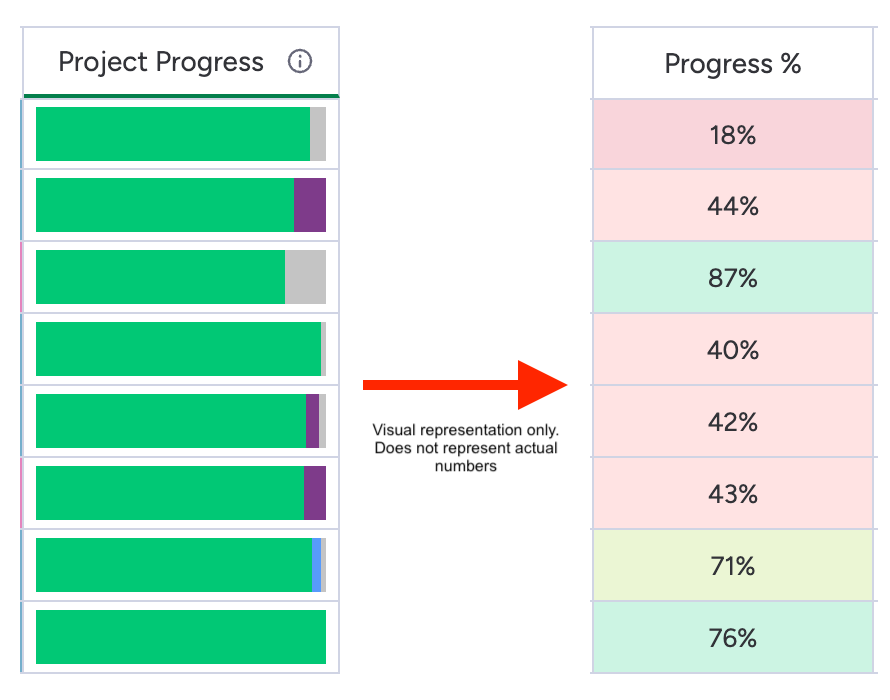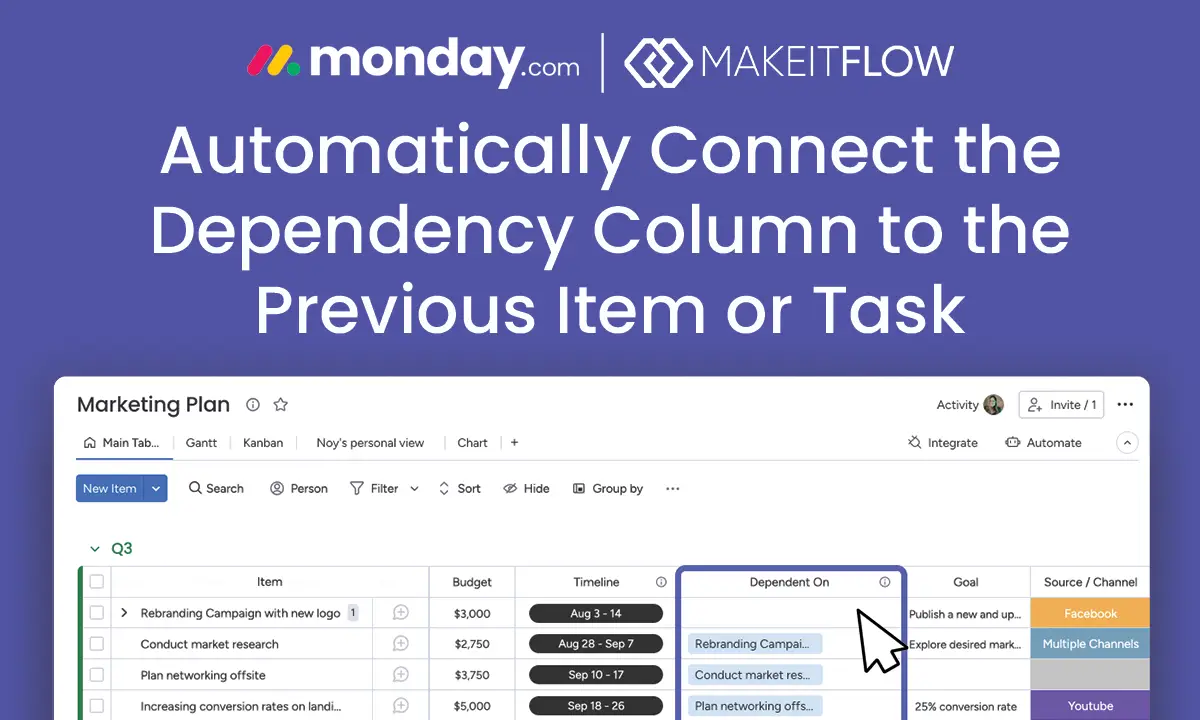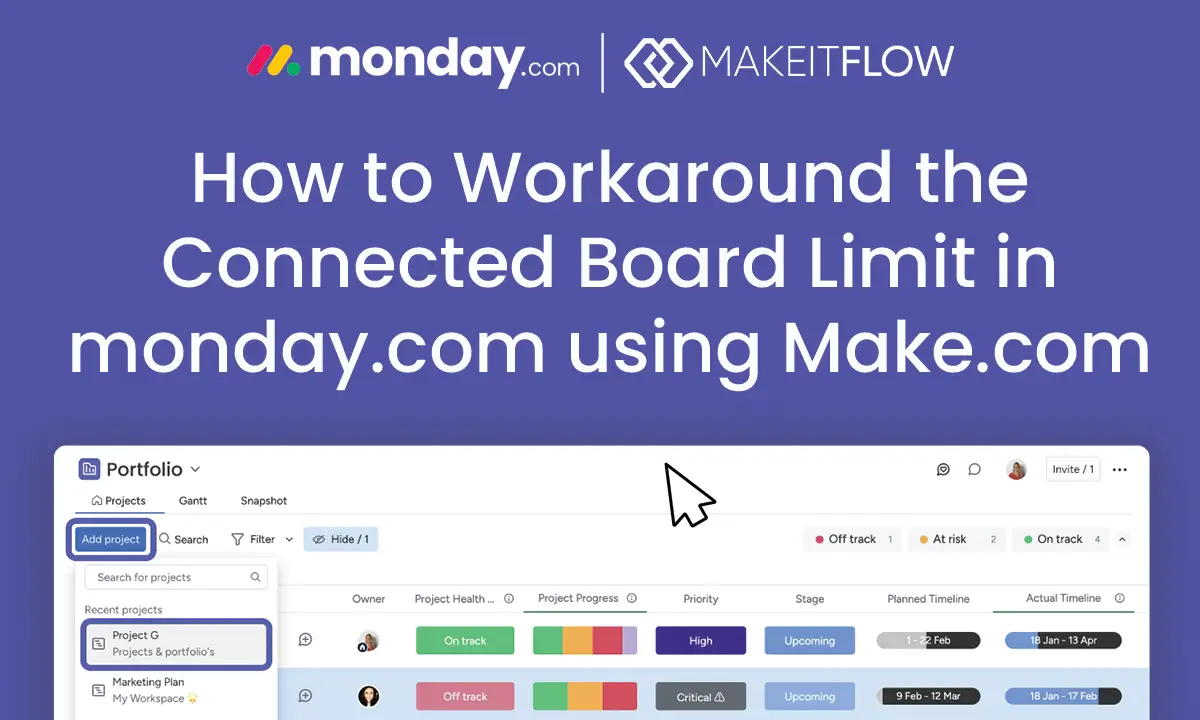As a monday.com certified partner and implementation specialist, I’ve encountered numerous challenges that businesses face when setting up their project management software. One of the most persistent issues that many of my clients have struggled with is the connected board limit in monday.com. This limitation has been a significant hurdle for organizations aiming to create a robust high-level/low-level project management structure. However, I’m excited to share a game-changing solution that leverages the power of make.com to overcome this constraint.
Understanding the Connected Board Limit
Let’s first understand what the connected board limit is and why it poses such a challenge for many monday.com users. Monday.com offers a column type called “connect board” that allows users to link different boards together, creating relationships between items across multiple boards. This feature is incredibly useful for organizations that need to manage complex projects with multiple layers of tasks and subtasks. However, monday.com imposes a limit on the number of boards that can be connected to a single board. This limit varies depending on the plan you’re on:
- Basic plan: 1 connected board
- Standard plan: 5 connected boards
- Pro plan: 20 connected boards
- Enterprise plan: 60 connected boards
While these limits may seem generous at first glance, they can quickly become a bottleneck for businesses with complex project structures or those looking to implement a comprehensive high-level/low-level setup.
The High-Level/Low-Level Dilemma
Many of my clients approach me with a desire to implement a two-tiered project management system within monday.com:
- High-Level Board (a.k.a. “Portfolio”): This board typically contains overall project information, milestones, and key deliverables.
- Low-Level Boards (a.k.a. “Projects”): These boards break down the high-level projects into more detailed tasks, subtasks, and day-to-day activities.

The idea is to maintain a clear overview of all projects while also allowing teams to dive deep into the specifics of each project. This setup is particularly beneficial for organizations managing multiple projects simultaneously or those with complex, multi-faceted projects. The connected board limit, however, throws a wrench into this plan. Even on the Enterprise plan, with a limit of 60 connected boards, large organizations or those with numerous projects can quickly hit this ceiling. This limitation forces teams to either consolidate information (losing granularity) or create disconnected boards (losing the ability to easily track progress and dependencies).
Enter Make.com: The Workaround
As a make.com specialist, I’ve always been fascinated by its ability to create powerful automations and integrations. When faced with the connected board limit challenge in monday.com, I turned to make.com to develop a robust workaround. Here’s how I can help you use make.com to overcome the connected board limit and create a seamless high-level/low-level project management system:

- Create Unlimited Virtual Connections
The core idea behind this workaround is to use make.com to create virtual connections between boards, effectively bypassing the monday.com limit. Here’s how it works:
- Set up a high-level board in monday.com as usual.
- Create as many low-level boards as needed for detailed task management.
- Use make.com to create scenarios that monitor changes in the low-level boards.
- When changes occur, make.com updates the corresponding information in the portfolio, mimicking the behavior of connected boards.
- Implement Two-Way Synchronization
One of the key benefits of connected boards is the ability to have two-way synchronization of data. We can replicate this functionality using make.com:
- Create scenarios that watch for updates in status, progress, or any other relevant fields in the low-level boards.
- When changes are detected, make.com automatically updates the corresponding item in the high-level board.
- Similarly, create scenarios that monitor changes in the high-level board and propagate those changes to the relevant low-level boards.
Benefits of the make.com Workaround
Implementing this make.com-based solution offers several advantages:
- Scalability: There’s no limit to the number of boards you can virtually connect, allowing your project management system to grow with your organization.
- Flexibility: You have complete control over how data is synchronized and aggregated, allowing for customized workflows that precisely match your business needs.
- Cost-Effective: This solution allows you to achieve beyond enterprise-level functionality without necessarily upgrading to the highest-tier monday.com plan.
- Future-Proof: As your project management needs evolve, you can easily adjust your make.com scenarios to accommodate new requirements without being constrained by monday.com’s limitations.
Are there any downsides?
One downside may be losing the “visual” representation of the progress bar. It would look somewhat like this instead:

You may also lose access to certain types of columns such as mirror columns. For example, it would not be possible to mirror all files in a files column from the low-level board up to the high-level board.
Implementing the Solution
While the concept behind this workaround is straightforward, the implementation requires a deep understanding of both monday.com’s structure and make.com’s capabilities. Here are some key factors I take under consideration:
- Data Mapping: How data will be mapped between boards is crucial to ensure accurate synchronization. Nomenclature needs to remain consistent in all connected boards.
- Error Handling: Robust error handling will be needed in your make.com scenarios to manage any synchronization issues that may arise.
- Performance Optimization: The scenarios need to be optimized to minimize API calls and ensure smooth performance, especially for large-scale implementations where lots of project status changes may occur.
- Security: Ensure that your make.com scenarios adhere to your organization’s data security policies, especially when dealing with sensitive project information.
- User Training: Clear guidelines are needed for your team on how to interact with the new system, emphasizing any changes in workflow compared to native connected boards.
Interested in this solution?
Contact me today to discuss how we can implement this make.com workaround for your organization!




